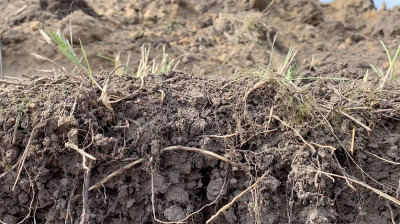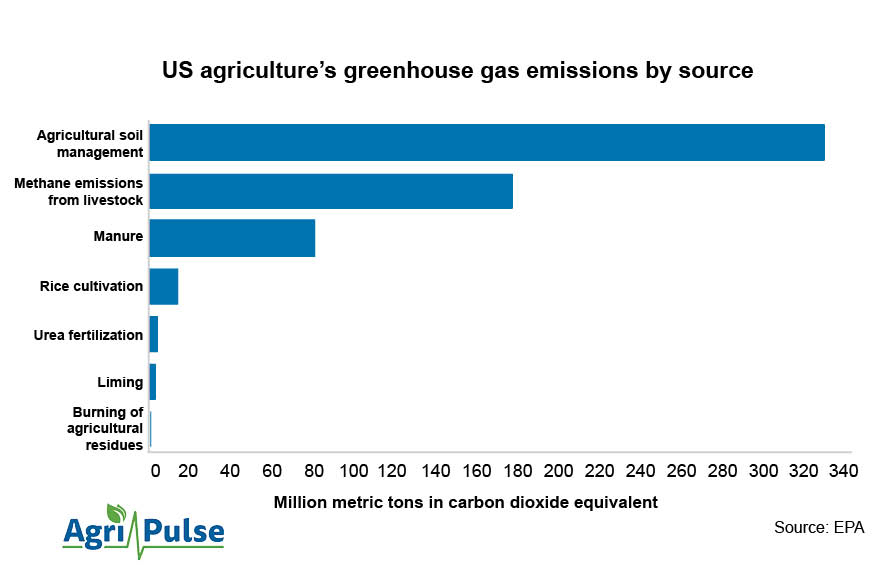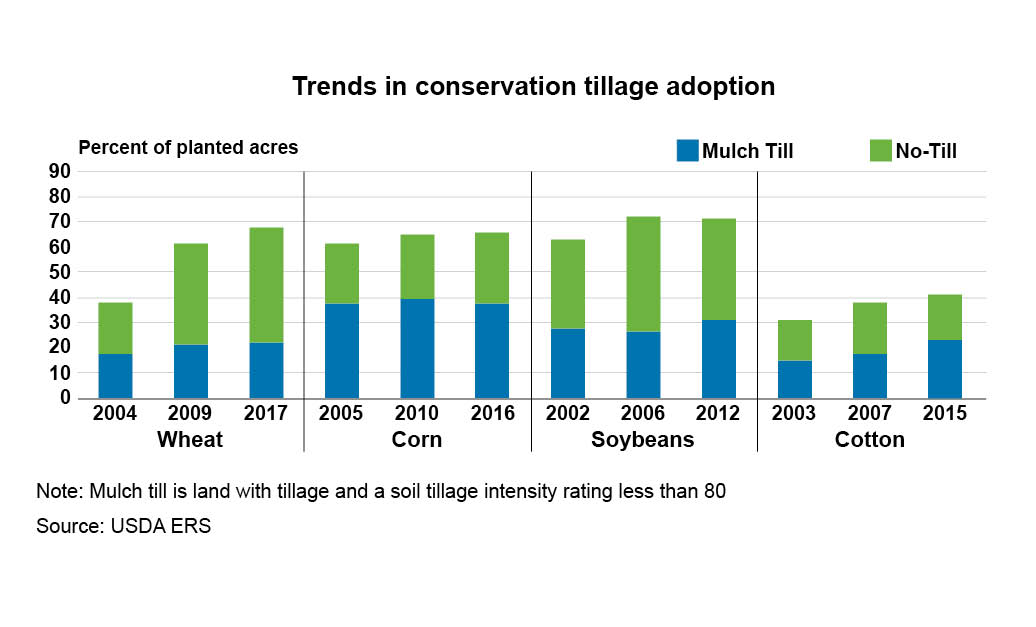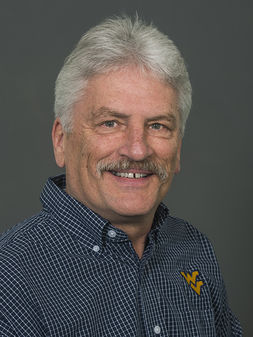This article is the second installment in our five-part series on sustainability efforts in agriculture. The first article focused on corporate sustainability pledges and their impact on producers.
A dizzying array of ongoing research projects, with sponsors ranging from the Energy Department to multinational food industry giants, will go a long way toward determining whether carbon credit markets can become a reliable, meaningful source of income for farmers.
The researchers are working feverishly to produce data on how much carbon-saving farm practices can reduce emissions and whether farmers can make a profit carrying them out.
The ultimate goal: Provide the data needed to put a price on the greenhouse gases farmers can keep out of the air, allowing those reductions to then be sold as carbon credits. Oil and gas companies as well as airlines are potential buyers of the credits, in addition to food companies and others that are counting on purchasing credits to offset their emissions.
“These markets are going to collapse if they’re based on assumptions or information that doesn’t end up holding up to scientific scrutiny. … It’s going to be a black eye,” said Cannon Michael, a farmer in California’s Central Valley who is participating in several research projects with scientists at the University of California-Davis and elsewhere.
Michael, who produces cotton, tomatoes, melons, herbs and other crops, says there has to be proof of how much farming practices such as reduced tillage actually increase soil carbon and reduce emissions. “You're going to have to really be backed up with good science,” he said.
To increase the carbon content of his soil, Michael is using reduced tillage as well as a microbial soil treatment known as BEAM compost (BEAM stands for biologically enhanced agricultural management).
Planting cover crops, a practice being heavily promoted to increase soil carbon in other parts of the country, doesn’t work as well in the Central Valley, where the cover crops can compete for valuable soil moisture, he said.

Agri-Pulse Sustainability Series: Cover crops and carbon measurement
In the second video of the sustainability series, we learn more about the process of adopting cover crops into production systems and how carbon is measured in the soil.
The research taking place there and across the country will show which farmers in which parts of the country may benefit the most from so-called carbon farming, and the findings also will provide guideposts for industry sectors that are trying to reduce their emissions to satisfy customers’ demands: Livestock producers, for example, may find that adjusting feed sources could help them show animals were produced with a smaller impact on the environment.
In order to leverage the ag sector to achieve carbon reduction goals, “we need to have the tools to be able to measure the carbon harvest as accurately as we measure, you know, a corn harvest or a wheat harvest,” says David Babson, program director at the Department of Energy’s Advanced Research Projects Agency-Energy, or ARPA-E, which is heavily involved in funding the research.
Experts urge patience, say research will take time
Answers to researchers’ questions are needed quickly. Food and apparel companies are under pressure from consumers to reduce emissions from their supply chains, private credit markets are starting up, and President-elect Joe Biden has made agricultural carbon credits a major part of his climate plans.
Robert Bonnie, who leads the Biden transition advisory team for USDA, has proposed using the Commodity Credit Corp. to set up a carbon bank that would buy and sell carbon offsets from farmers. That’s the same CCC the Trump administration has been using to make trade assistance and coronavirus relief payments to farmers.
The carbon bank proposal is included in a climate policy memo produced by a group of former officials, including Bonnie, who served as undersecretary of natural resources at USDA during the Obama administration.
The research on the impact of climate-friendly practices will take several years to complete but is moving along with the help of millions of dollars in grants from the federal government, private foundations and private industry, not to mention the driving force of billions in corporate wealth tied to carbon commitments.
“We're kind of in this no man's land, so to speak, where we can't measure everything fast enough or efficiently enough to quantify in real terms what's going on, because it's just too much — you don't have enough people with enough money to go out and take all those measurements,” said John Mesko, senior director of the Soil Health Partnership, a research group backed by the National Corn Growers Association, Bayer AG, the National Wheat Foundation, The Nature Conservancy and the Environmental Defense Fund.
The partnership is involved in field trials in more than 16 states, involving more than 200 farmers.
“If you have to go out to every single farm field and dig a meter soil core to quantify the change in carbon, that's really expensive,” said Kris Johnson, The Nature Conservancy’s deputy director of agriculture for North America.
Cost estimates for soil sampling can vary widely. Some scientific data suggests that soil samples may need to be a meter deep to show the changes in carbon content, but that would require more expensive equipment, Johnson said. Also, if a farmer’s land has multiple types of soil, more samples may have to be taken.
Ultimately, testing requirements are likely to be based on the standards of the credit program. “The more rigorous the standard, the higher the field verification and soil sampling costs which can eat into the potential incentive payments available for farmers adopting soil health practices,” he said.
The research on row crops is especially crucial to the livestock and poultry industries because the carbon emissions associated with corn form a large portion of the carbon footprint for food animals, especially chickens, turkeys and hogs. The largest source of emissions from U.S. agriculture is actually the production of row crops, in part because of the use of nitrogen fertilizer, which turns into nitrous oxide gas.
Soil management practices, including nitrous oxide emissions, accounted for 338 million of the 618 million metric tons of greenhouse gas emissions from U.S. agriculture in 2018, according to the Environmental Protection Agency. The emissions source that gets the most media attention — methane emissions from belching cattle — accounted for about 178 million metric tons. 
Ideally, researchers can someday evaluate soil carbon the way the dairy industry has been able to measure the impact of installing equipment like methane digesters to turn methane from cattle manure into a gas to generate electricity, said Michael, the California farmer.
Because of the digesters, California dairy producers are on track to meet a goal of cutting methane emissions 40% by 2030, according to Dairy Cares, a statewide industry coalition in California.
The use of nitrogen and conservation tillage on U.S. cropland can vary by year.
Corn growers applied nitrogen at an average rate of 149 pounds per acre in 2018, the latest year for which USDA survey data is available for corn. That was up from 140 pounds an acre in 2010 and 138 pounds in 2005. Cotton growers applied 85 pounds of nitrogen per acre in 2019, up from 77 pounds in 2010.
Meanwhile, 72% of soybean acreage was no-till or minimum-till in 2017, versus 67% in 2012 and 75% in 2006. The amount of conservation tillage on corn acreage has been relatively flat over that period at just over 60%.
Cover crop adoption varies widely by region, with some of the lowest levels in the Plains states and some of the highest in the states bordering the Chesapeake Bay, where the EPA has set pollution limits, according to a University of Illinois analysis of USDA data.
Some 29% of the cropland in Maryland had cover crops in 2017, compared to 4% in Iowa and 3% in Nebraska, Oklahoma and Texas, and 1% in the Dakotas.
Projects aim to slash cost of climate-friendly farming
One of the more prominent efforts driving research is being led by the Ecosystem Services Market Consortium, which plans to launch a voluntary market to sell carbon and water quality and quantity credits for the agriculture sector by 2022.
ESMC’s funders include public and private sources: The Foundation for Food and Agriculture Research, the Natural Resources Conservation Service, the Ida and Robert Gordon Family Foundation, General Mills, the Walton Family Foundation, McKnight Foundation, Noble Research Institute, United Soybean Board, and The Nature Conservancy.
ESMC's founders also include McDonald’s, Danone North America, Nestle, ADM, Bunge, Cargill, Corteva Agriscience, Nutrien and Syngenta.
“When we are quantifying outcomes for ecosystem services markets, hand grenades and horseshoes are not enough — close is not enough — we need to be accurate,” says ESMC Executive Director Debbie Reed.
Reed previously led the Coalition on Agricultural Greenhouse Gases, which supported development of tools, support systems, knowledge, and programs to improve quantification of GHG from agriculture. She also has worked at the White House Council on Environmental Quality as the director of legislative affairs and agricultural policy and in the U.S. Senate as a senior staffer focused on natural resource and agricultural issues for Nebraska Sen. Robert Kerrey.
ESMC has launched nine regional pilot projects, four in the Corn Belt, three in the southern Plains, one in the Pacific Northwest and one in the Great Lakes region.
The projects include a collaboration with General Mills’ regenerative ag program in Kansas involving wheat farmers, which the cereal maker says will contribute to its effort to reduce its absolute GHG emissions by 28% across its full value chain by 2025.
Another pilot involves The Nature Conservancy, McDonald’s, Cargill and Target. It’s a five-year, $8.5 million, 100,000-acre project aimed at helping Nebraska farmers advance soil health
One goal is to reduce farmers’ costs 75% from where they were when the projects started, Reed said.
Reed said it’s tough to say what the specific costs are because there have been different ways to measure them, and there has been little transparency. “But since we started this all fairly ‘from scratch’, we are able to build our own cost models that we will then track over time. So, we will aim to drop costs relative to our own starting costs.”
Johnson of The Nature Conservancy agrees that cost reduction is critical. “You’ve got to get it down to where it's inexpensive enough that you can do this.”
Low carbon fuel standard drives DOE’s research rush
The Energy Department’s Advanced Research Projects Agency (ARPA-E) is playing a big role in priming the research through its SMARTFARM program, which is focused on measuring the carbon intensity of feedstocks for biofuels production. The goal is help biofuel crop producers profit as soon as possible from adopting practices that reduce GHG emissions and capture and store more carbon in their soils.
Under California’s Low Carbon Fuel Standard, biofuels with lower carbon intensity generate credits that can be sold to fuel producers that need them to comply with the standard. Meanwhile, the National Corn Growers Association’s No. 1 legislative priority is a bill called the Next Generation Fuels Act that would set a carbon emission limit on gasoline.
The effective price on carbon in California now is about $200 a ton, the highest carbon market price in the world, and that could provide a substantial incentive for farmers even if it costs them $50 an acre to reduce emissions, Babson said. Farmers could start realizing the benefits just by reducing losses from their fields of nitrous oxide, which has nearly 300 times the warming potential of carbon dioxide.
“The cool thing about the low carbon fuel standard is that you get paid on the emissions reductions relative to the petroleum baseline, so you don’t even need to sequester the carbon underground in a lot of cases,” Babson says.
Employing a nitrogen use efficiency strategy that cuts nitrous oxide emissions would allow a farmer to get paid immediately. Modest emissions reductions of 30% to 60% with a carbon price of $60 to $140 a ton would translate into a price for nitrous oxide of $20 to $140 an acre.
The technologies and practices used to address the California fuel market can in turn help farmers across the country. “If we can leverage that existing carbon market to develop all these technologies, there's no reason why they couldn't be applied to any other type of ag system,” Babson said.

David Babson, ARPA-E
To that end, ARPA-E is funding the development of low-cost sensors and systems to measure farm-level carbon intensity.
Among $16.5 million awarded in grants in September, the Soil Health Institute just received $3.25 million for a soil carbon measurement and monitoring system using sensors called the DeepC System.
Soil carbon sensors “will be a paradigm shift in terms of how we can do those measurements,” Babson said, by reducing the costs significantly and allowing soil carbon testing to be performed by third parties.
Current methods to measure carbon are expensive for monitoring soil carbon at scale, and fields are variable, says SHI Chief Scientific Officer Cristine Morgan. “You can walk a couple feet, 100 feet, or 10 feet, and you have a different amount of carbon,” she says. “Sending off one soil core to the lab is no big deal but sending off a wheelbarrow of soil to the lab is a big deal.”
A private research firm, Dagan Inc., received a $1.8 million grant in the same round of funding to build, validate, and demonstrate an integrated system for reliable and cost-effective measurement of field-level soil carbon and nitrous oxide emissions.
Dagan CEO William Salas, who helped develop a well-known and long-standing model for gauging emissions called DNDC, for DeNitrification-DeComposition, is working to enhance its use for measuring nitrous oxide emissions from fields.
Interested in more coverage and insights? Receive a free month of Agri-Pulse.
The research components complement one another. Morgan’s research and other efforts to measure carbon are critical to what Dagan is doing, Salas says.
“To model nitrous oxide well, we need to know we have reasonable soil carbon data, because soil carbon determines sort of the potential for the size of the microbial community, affects the soil moisture content, all these other things that affect” nitrous oxide, he said.
It’s expensive and labor intensive to measure nitrous oxide well because it is released from fields sporadically: A large fraction of all the nitrous oxide emitted in a season can come off in a single day.

William Salas, Dagan
DNDC is designed to model all the practices that can lead to nitrous oxide reductions and soil carbon sequestration, including crop rotations, conservation tillage, crop residue management, cover cropping, nutrient management and the use of compost, Salas said.
The model "simulates how these practices influence soil environmental conditions,” such as temperature, moisture, and mineral nitrogen, Salas says. "The soil environmental conditions influence which soil microbes are most active, affecting the emissions of greenhouse gases.
“We monitor management practices with satellites, where we can do that for pennies an acre so we don’t have to send somebody out,” Salas said. “And that's how we can reduce those transaction costs for participating in ecosystem markets so that there's value left for the grower.”
Salas is expanding the model and conducting extensive testing and demonstration of the model at ARPA-E sites.
Both SHI’s and Dagan’s projects have timelines of about two and a half years.
Greg Thoma, an engineer and lifecycle assessment expert at the University of Arkansas, also cautions patience. “We can still identify cases where one model will predict soil carbon loss and another one will predict, for the purported same conditions, soil carbon sequestration, so I wouldn't yet characterize it as settled,” he says.
Mesko of the Soil Health Partnership said another thing that needs to be measured is the soil’s water holding capacity and “aggregate stability,” its ability to hold up under the pressure of farm equipment or water.
“If we can have a soil that holds moisture in dry years and moves water through better in wet years, then we're going to have a lot less variability across the field,” Mesko said. “It’s probably going to increase yield overall, but it's also going to allow that farmer to be more efficient in their field operations,” rather than avoiding certain spots because they’re too wet and then coming back to them later.
Livestock systems another area where measurement is unsettled
The pork industry is betting that being able to measure producers’ carbon footprint could give them a marketing edge with meat companies and grocers.
With assistance from scientists at the University of Arkansas, the National Pork Board is testing a carbon footprint calculator that a producer can use to estimate the greenhouse emissions, including the transportation of the feed to the farm, and the emissions of methane from the hogs’ manure.
But there is a big piece of missing information: The board is still waiting for the grain industry to agree on how to measure the carbon emissions from producing the corn, soybeans and other commodities that make up the feed.
When the calculator is finished, a producer will also know how to adjust his or her operation in order to meet the expectations of processors or retailers, some of whom have committed to making major reductions in their supply chain’s greenhouse gas emissions.
A key issue for the cattle sector is how to count methane emissions from manure and belching cattle.
As a greenhouse gas, methane is four times more potent than carbon dioxide, but some leading scientists argue that its global warming potential isn’t as great as currently calculated because it has a short half-life of 10 or 12 years, said Thoma.
As a result, scientists including Myles Allen of the University of Oxford argue for calculating the climate impact of cattle according to their “global warming potential” rather than carbon emissions. “Any farmer who has had a constant herd for 20 years or more would see a much lower value assigned to the impact of their herd, which is consistent with its actual impact on global temperature,” he said in an email to Agri-Pulse.
Farmers could face regional disparities
A big question for agriculture is who will benefit from the measurements of carbon impacts, assuming there is agreement on how to do it. The Biden administration and Congress will have to struggle with how to address these disparities if they decide to use USDA to reward farmers for carbon offsets.
Another long-standing issue is whether to credit farmers who have already following practices that maximize soil carbon and reduce nitrogen losses.
Farmers with better soils or who have been employing better management practices over many years may be disadvantaged because the improvements they can make at this point won’t have much impact on their existing carbon footprint.
“The answer to the question of whether or not farmers in different regions will fare better is yes, basically, in every circumstance, because some regions are just better and some soils are better at sequestering soil carbon, some systems are better at that,” said Reed of the Ecosystem Services Market Consortium.

Mark Sperow, West Virginia University
“The more degraded your soils when you start, the bigger the opportunity, right, to improve soil carbon and remove other greenhouse gases,” Reed says. “The healthier your soils, the smaller the potential.”
In terms of what parts of the country have the potential for the most improvement, a paper released this year authored by Mark Sperow at West Virginia University found it was the wetter regions in the middle of the country.
“The largest soil organic carbon increases occur in wetter climates, with cover crops and no-till adoption providing the largest increases,” Sperow’s paper concludes.
Johnson of The Nature Conservancy said the next couple of years are going to be confusing for farmers because of the emerging market offerings.
“There are new companies and new programs emerging all the time,” he says. “And farmers can sign up to get paid for activities that store carbon.” But those different programs will come with “different levels of rigor and quality, and we'll just have to kind of wait and see” how the emerging market shakes out.
Johnson emphasizes that as the market adjusts, “we have to make sure good, scientific approaches are used so that carbon claims from agriculture can be trusted and can help bring more funding to farmers to incentivize climate-smart practices.”
Next: How carbon farming would work and whether it can make a real difference in greenhouse gas emissions.
For more news, go to www.Agri-Pulse.com.


